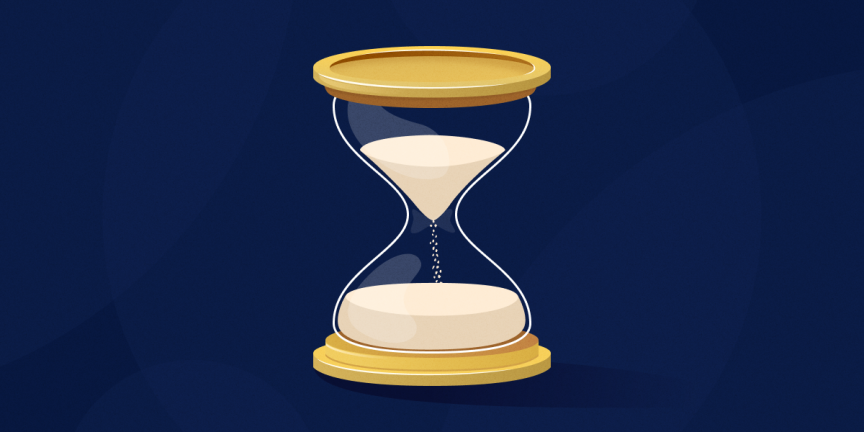What is the ideal length of a Sprint Retrospective?


The Sprint retrospective is an intuitive, engaging, and effective tool designed to help teams improve continuously. The good news is that you can run a retrospective about any initiative: a Sprint, of course, but also a project, an event, a quarterly review, etc. So as long as there is a desire to learn and improve together, there is room for a retrospective session.
As co-founder of the online retrospective tool Neatro, I often talk with Scrum Masters, Agile Coaches, or simply team members who have an interest in facilitating retrospectives.
Among the most common challenges encountered in conducting retrospectives, time management is often raised.
Some people wonder about the ideal length of a retrospective. However, the most experienced facilitators usually look for tools and techniques to help them improve the quality of their retrospectives while respecting their time constraints.
After countless discussions dealing with time management in retrospectives, I am now ready to share my lessons learned here, with you.
Yes, I know… it was about time! 😏
In this article, we will tackle the following topics:
What are the risks associated with poor time management in Sprint Retrospectives?
Be careful with retrospectives that are too short. Conversely, beware of retrospectives that last way too long.
When you set up a retrospective meeting, do like Norman L. Kerth. Use your common sense:
"It is unreasonable to believe that significant learning about a multi-person project that lasted several months can occur in one hour."
- Norman L. Kerth, Project Retrospectives: A Handbook for Team Reviews
Rushing a retrospective is missing the point of the activity. It is also compromising the expected results.
You need to give more time for participants to speak to get an honest and authentic portrait of the iteration that just ended. Doing so will enable your to build an action plan that addresses the real challenges of the team.
"At best, such a brief retrospective may serve to identify a few symptoms of real problems, but participants are unlikely to be able to do more than recommend poorly analyzed, partial solutions that do not fully address the issues."
- Norman L. Kerth, Project Retrospectives: A Handbook for Team Reviews
Retrospective facilitators are generally aware of the risks you expose yourself to when conducting too short retrospectives. However, just a few people understand the damaging effects of lengthy retrospectives.
Here's a sample of these dreadful consequences:
team members find it challenging to stay focused and engaged,
a feeling of exhaustion, even exasperation, among team members,
action plan ends up being shaped fast and without particular care,
people lose confidence in the effectiveness of retrospectives.
How to determine the length of a Sprint Retrospective?
As we mentioned in the introduction, there are many occasions for running a retrospective.
These include project retrospectives (also called post-mortems) or Sprint retrospectives (also work with iterations). Although these two families of retrospectives aim to support a culture of continuous improvement, the way you should conduct them remains different.
1/ Give me a magic formula!
Let's not beat around the bush forever. Unfortunately, there is no universal formula for determining the optimal length of a retrospective.
"How long should your retrospective be? It depends. Fifteen minutes can be enough - or not. There's no set formula."
- Esther Derby & Diana Larsen, Agile Retrospectives - Making Good Teams Great
If there is no magic formula to provide here, there are nevertheless several rules and aspects that allow us to best estimate the duration of our retrospectives. To come to this statement, I had to combine principles taken from some of the most respectable books that deal with Agile Retrospectives facilitation.
2/ What does the Scrum Guide say?
Let's start with a clear and precise answer. If you facilitate Sprint Retrospectives, the Scrum Guide recommends a time limit.
"The Sprint Retrospective concludes the Sprint. It is timeboxed to a maximum of three hours for a one-month Sprint. For shorter Sprints, the event is usually shorter."
- Scrum Guide, 2020 edition
Three hours max for a one-month Sprint. One and a half hours as a general rule for a two-week Sprint.
Cool... but the Scrum Guide does not deliver more content on this subject. Therefore, we must look out for more hints somewhere else.
3/ What other elements impact the duration of a Sprint Retrospective?
The book Agile Retrospectives provides us with a very detailed approach:
"Base the length of the retrospective on four factors: Length of the iteration, Complexity (of the technology, relationships with external departments, organization of the team), Size of the team, Level of conflict or controversy."
- Esther Derby & Diana Larsen, Agile Retrospectives - Making Good Teams Great
We understand here that the duration of a retrospective depends on many more factors than we would like to hear. Our wish for a universal formula has definitely vanished.
Aino Vonge Corry confirms several factors proposed by the Agile Retrospectives book and incorporates an additional one: 'the ambitions for the result of the retrospective.'
The author invites us to think about the outcome of the retrospective: do we simply want to surface our team's issues? Or do we want to run a full audit of our strengths and weaknesses, so that we can build an action plan that truly addresses our challenges?
In a nutshell, these are 5 factors you should consider when determining the length of your retrospective session:
the number of attendees,
the duration of the Sprint or project observed,
the level of complexity of the initiative,
the degree of conflict or controversy of the initiative,
ambitions regarding the result of the retrospective.
From my experience, and I am convinced that yours will support my point, we could also have mentioned:
The level of psychological safety in the team.
The team's seniority level: are the members used to working together, or is it a whole new team?
The logistical aspect of the retrospective: is it a face-to-face or virtual retrospective? Do the tools we use to conduct it help us save time?
4/ Some practical considerations
We have seen that there is no magic formula to estimate the duration of a retrospective. Alternatively, we must reflect on several key factors to offer a sharp and effective retrospective.
Fortunately, we can rely on retrospective specialists' experiences to help us see things more clearly.
"If you have a team of six to eight people, 1 hour for each week you are retrospecting over will be sufficient. This means 2 hours after each 2-week Sprint, for instance. If you have more people, you will need more time, at least if you want to get the same result."
- Aino Vonge Corry, Retrospectives Antipatterns
For Derby and Larsen, the ideal is to plan a retrospective time long enough to maximize the chances of obtaining a convincing result. In addition, the two authors remind us that nothing prevents you from finishing a retrospective earlier than planned:
"You can always end the retrospective early if people identify meaningful improvements and finish their plans before the planned end time. There's no point prolonging the retrospective once the team has achieved the goal."
- Esther Derby & Diana Larsen, Agile Retrospectives - Making Good Teams Great
Example Structure of a 90-Minute Sprint Retrospective
To be effective, a retrospective must be structured. We cover the steps of a remote retrospective in detail in our comprehensive guide to hosting an online retrospective.
Here is an agenda you could pick for your next retrospective, with a total duration of 90 minutes.
Feel free to take ownership of this plan and modify it as you wish: you are the best person to know what works best for your team!
Introduction: start with an icebreaker (10 minutes)
Set the bases for a safe space.
Icebreakers help bring a human and playful touch to your retrospective.
Most importantly, these activities are necessary to grab everyone's attention on the retrospective and establish a good level of psychological safety within the group.
💡 Discover our Top 100 Icebreaker Questions and the Two Truths and a Lie Icebreaker!
Step 1: write comments (10 minutes)
Let people write ideas and avoid groupthink.
This first retrospective step aims to let the participants write comments and post them in the different columns of your board.
Each column of your board helps you organize your ideas. Even if you are the facilitator of this retrospective, you will most likely take on the participant role as well, right? So try to be as specific as possible so your teammates can easily understand your comments.
To provide an appropriate level of psychological security, allow participants to share comments anonymously. At this stage, you want to avoid group thinking at all costs. People should refrain from influencing each other in the process. Make sure people cannot see what other participants write in this step.
Reveal all comments after everyone has finished adding comments.
Step 2: Group comments (15 minutes)
Get your board lean and well organized.
This step allows you to regroup similar comments and attach/create topics.
Drag and Drop Grouping
You might have a lot of comments displayed on the board at this point. Regroup similar comments to help your teammates understand the weight of each idea.
Use topics to better identify your challenges
Regrouping similar comments is not enough! Adding topics will significantly help you organize your team's ideas.
'What's a topic?' you may ask. It could be anything. We usually tend to see 'core team dimensions' reflected in the topics (e.g., Ownership, Value, Speed, Process, Collaboration, etc.). Still, you could create any topic to help you efficiently manage your team's comments.
Step 3: Vote (5 minutes)
Time to prioritize items to focus on what really matters.
Proceed to a vote session to narrow down the number of items you would like to discuss in the next phase.
Two rules that I heavily suggest applying at this step:
- Make sure that nobody can see the other's votes.
- Allow each participant to spend their votes on one or multiple items.
Take a break! (5 minutes)
Give your team a break.
Yes! A short break will help the participants clear their minds before tackling the most critical retrospective phase.
Don't underestimate the benefits of a break in team members' productivity levels, especially in a 90-minute meeting like the one we're planning here.
Step 4: Build your team Action Plan
Collectively define what needs to be done to make the team grow.
Discuss the most voted topics or comments with your team to create action items.
Assign an owner to each action item, and provide a short and clear description so everyone can understand how to resolve their action items.
💡 Be wise! Use the SMART model to build an effective action plan.
Step 5: Run a ROTI survey (5 minutes)
Measure the return on time invested for all participants.
With a ROTI, measure your meeting effectiveness by letting each participant evaluate their return on time invested.
In addition to providing you with a ROTI score from 1 to 5, this technique allows all participants to suggest ideas to improve the quality of the next retrospective.
💡 We tell you everything you need to know about the ROTI technique in this article.
7 tips for mastering time management in your Sprint Retrospectives
These tips and techniques will help you improve your retrospective facilitator skills.
1/ Prepare the agenda and publish it in advance
Publishing the retrospective agenda is a great way to align the team members on what can be expected from this meeting.
If anything is unclear, or if anyone has questions about this plan, be sure to take the time to respond to all team inquiries.
Attendees will arrive at the retrospective fully aware of the upcoming program, saving everyone time.
2/ Use a timer
Make sure you have a timer visible to all participants during every step of the meeting. Keeping track of time may seem like a simple piece of advice, but it really is a determining factor in the success of your retrospective.
3/ Perform a part of the retro in asynchronous mode
If you run your retrospective in remote mode, you might want to ask attendees to post their comments on your retrospective board before the meeting begins.
Concretely: open your retrospective board a few days before the retrospective (or even at the start of your Sprint) so members can add their reflections whenever they want.
When the time for retrospect arrives, start with your icebreaker activity. Then leave a moment for everyone to reread their comments - and possibly add new ones.
Offering the collection of comments in asynchronous mode is a very interesting way to save time. Choose this approach if you anticipate that you might run out of time at your next retrospective.
💡 How to make an asynchronous retrospective? This is the question we discuss in this article.
4/ For large groups, use breakout rooms
If you use collaboration tools like Zoom or Microsoft Teams, you are undoubtedly familiar with the feature that allows you to split an audience into small discussion groups: breakout rooms!
Using breakout rooms allows you to cover all the necessary topics across a large number of participants. Try it and see the difference.
5/ Vary your retrospective activities
By using the same retrospective activities over and over again, the team can end up getting bored. This inevitably lowers motivation and commitment and makes the team's ability to produce new ideas more complicated and time-consuming.
Proposing new retrospective activities ensures a high level of attention and creativity. Furthermore, by discovering new retrospectives techniques, the team members keep a sharp mind and adopt a more curious posture.
Ultimately, varying the activities allows you to keep a good dynamic in your retrospectives and avoid you to spend time trying to re-engage members in this exercise.
💡 Discover our catalog of retrospective ideas and find your next activity!
6/ Perform a ROTI session
Yes, I know… I already named ROTI in the previous section. But let me again draw your attention to the importance of this exercise.
With a ROTI survey, you can know how participants feel about the value of meeting and better understand if they think their time has been spent wisely.
💡 While your retrospective is held in face-to-face or virtual mode, do me a favor: conclude your retrospective with a ROTI! :)
7/ Use a retrospective tool to save time
We cannot say it enough: use a tool specialized in retrospectives to get the most value from your team meetings.
Neatro offers you a playful, productive, and inclusive retrospective experience.
Are you looking for everyone to be able to express themselves freely in your retrospectives? Neatro responds fully to this task by carefully avoiding groupthink and making anonymity available to participants.
If you want to break the routine of retrospectives, Neatro offers you an impressive collection of retrospective templates and Team Radars to help you experience memorable retrospectives.
Finally, Neatro allows you to measure your team's progress over time accurately.
To try Neatro is to lay the foundations for a strong culture of continuous improvement - within a team or an entire organization.
💡 Try Neatro for your next retrospective! It's free - no credit card required.



